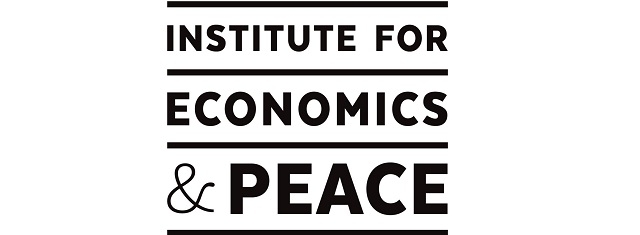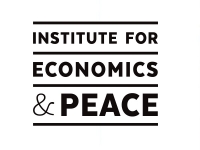Travel
GLOBAL PEACE INDEX: GLOBAL PEACEFULNESS IMPROVES FOR THE FIRST TIME IN 5 YEARS
WORLD LESS PEACEFUL THAN A DECADE AGO

(Source: Institute for Economics & Peace (IEP))
USPA NEWS -
- Key Results
* Ukraine registered the largest improvement this year; Nicaragua the largest drop.
* More countries decreased their militarisation, 106 countries, than increased it ““ continuing a decade long trend.
* Since 2008 global peacefulness has deteriorated by 3.78 %, with 81 countries deteriorating and 81 improving, highlighting that deteriorations in peacefulness are generally larger than improvements.
* Ukraine registered the largest improvement this year; Nicaragua the largest drop.
* More countries decreased their militarisation, 106 countries, than increased it ““ continuing a decade long trend.
* Since 2008 global peacefulness has deteriorated by 3.78 %, with 81 countries deteriorating and 81 improving, highlighting that deteriorations in peacefulness are generally larger than improvements.
- Key Results
* Ukraine registered the largest improvement this year; Nicaragua the largest drop.
* More countries decreased their militarisation, 106 countries, than increased it ““ continuing a decade long trend.
* Since 2008 global peacefulness has deteriorated by 3.78 %, with 81 countries deteriorating and 81 improving, highlighting that deteriorations in peacefulness are generally larger than improvements.
* Ukraine registered the largest improvement this year; Nicaragua the largest drop.
* More countries decreased their militarisation, 106 countries, than increased it ““ continuing a decade long trend.
* Since 2008 global peacefulness has deteriorated by 3.78 %, with 81 countries deteriorating and 81 improving, highlighting that deteriorations in peacefulness are generally larger than improvements.
- Climate Change Highlights
* More than 400 million people live in areas with low levels of peacefulness and high risk from climate change.
* Eight of the 25 least peaceful countries have 103 million at risk in high climate hazard areas.
* Regionally, sub-Saharan Africa has the weakest coping capacity for climate hazards, which could exacerbate violent conflicts.
* More than 400 million people live in areas with low levels of peacefulness and high risk from climate change.
* Eight of the 25 least peaceful countries have 103 million at risk in high climate hazard areas.
* Regionally, sub-Saharan Africa has the weakest coping capacity for climate hazards, which could exacerbate violent conflicts.
- GDP/Economic Cost of Violence Highlights
* The economic impact of violence on the global economy has decreased for the first time since 2012, amounting to $14.1 trillion in 2018, or 11.2 % or $1,853 for every person.
* Countries with very high levels of peace, on average, achieved over three times higher per capita GDP growth compared to the least peaceful countries for the last 60 years.
* In the ten countries most affected by violence, the average economic cost of violence was equivalent to 35 % of GDP, compared to just 3.3 % in the countries least affected by violence.
* The economic impact of violence on the global economy has decreased for the first time since 2012, amounting to $14.1 trillion in 2018, or 11.2 % or $1,853 for every person.
* Countries with very high levels of peace, on average, achieved over three times higher per capita GDP growth compared to the least peaceful countries for the last 60 years.
* In the ten countries most affected by violence, the average economic cost of violence was equivalent to 35 % of GDP, compared to just 3.3 % in the countries least affected by violence.
The 13th edition of the annual Global Peace Index (GPI) report, the world's leading measure of global peacefulness, reveals that the average level of global peacefulness improved for the first time in five years. However, despite improvement, the world remains considerably less peaceful now than a decade ago, with the average level of peacefulness deteriorating by nearly 4 % since 2008. This year's report includes new research on the possible effects of climate change on peace.
Eighty-six countries improved their score in the 2019 report, whilst 76 deteriorated. Iceland remains the most peaceful country in the world, a position it has held since 2008. It is joined at the top of the index by New Zealand, Austria, Portugal, and Denmark. Bhutan has recorded the largest improvement of any country in the top 20, rising 43 places in the last 12 years.
Afghanistan is now the least peaceful country in the world, replacing Syria, which is now the second least peaceful. South Sudan, Yemen, and Iraq comprise the remaining five least peaceful countries. This is the first year since the inception of the index that Yemen has been ranked amongst the five least peaceful countries.
Afghanistan is now the least peaceful country in the world, replacing Syria, which is now the second least peaceful. South Sudan, Yemen, and Iraq comprise the remaining five least peaceful countries. This is the first year since the inception of the index that Yemen has been ranked amongst the five least peaceful countries.
Produced by the international think-tank the Institute for Economics & Peace (IEP), the GPI report presents the most comprehensive data-driven analysis to-date on peace, its economic value, trends, and how to develop peaceful societies. The report covers 99.7 %t of the world's population and uses 23 qualitative and quantitative indicators from highly respected sources to compile the index. These indicators are grouped into three key domains: Ongoing Conflict, Safety and Security, and Militarisation.
- Regional overview:
* Peacefulness in Asia-Pacific improved in all three GPI domains last year, largely due to increases in UN peacekeeping funding and reductions in violent demonstrations and deaths from internal conflict. However, the impact of terrorism continued to worsen, as did internal conflicts fought and external conflicts fought. China climbed two places to 110th, ahead of Algeria at 111th and behind Djibouti at 109th.
* Central America and the Caribbean deteriorated in all three domains last year. Seven countries improved while five deteriorated, but as is typical of breakdowns in peacefulness, the deteriorations were larger than the improvements.
* Europe, the world's most peaceful region, became slightly more peaceful in 2018 continuing its decade-long trend. Twenty-two of 36 countries in Europe improved. Europe continues to dominate the top of the index, accounting for 17 of the 25 most peaceful countries.
* Peacefulness in Asia-Pacific improved in all three GPI domains last year, largely due to increases in UN peacekeeping funding and reductions in violent demonstrations and deaths from internal conflict. However, the impact of terrorism continued to worsen, as did internal conflicts fought and external conflicts fought. China climbed two places to 110th, ahead of Algeria at 111th and behind Djibouti at 109th.
* Central America and the Caribbean deteriorated in all three domains last year. Seven countries improved while five deteriorated, but as is typical of breakdowns in peacefulness, the deteriorations were larger than the improvements.
* Europe, the world's most peaceful region, became slightly more peaceful in 2018 continuing its decade-long trend. Twenty-two of 36 countries in Europe improved. Europe continues to dominate the top of the index, accounting for 17 of the 25 most peaceful countries.
* Peace in the Middle East and North Africa, the world's least peaceful region, improved marginally last year, based on improvements in 11 countries. Syria is no longer the world's least peaceful country, and recovery has started to materialise in Iraq.
* Peace in North America deteriorated last year, recording the second largest regional deterioration. Canada showed a small improvement in overall score, but the deterioration in the United States was much larger and was dragged down by increases in the homicide rate, violent crime and political instability. While Canada remains one of the ten most peaceful countries in the world, the US fell four places to 128th ““ in between South Africa and Saudi Arabia.
* Peace in North America deteriorated last year, recording the second largest regional deterioration. Canada showed a small improvement in overall score, but the deterioration in the United States was much larger and was dragged down by increases in the homicide rate, violent crime and political instability. While Canada remains one of the ten most peaceful countries in the world, the US fell four places to 128th ““ in between South Africa and Saudi Arabia.
* While most of Russia and Eurasia remains less peaceful than the global average, it was one of three regions to improve in every domain of the GPI last year, resulting in the largest regional improvement. Russia fell by one place to 154th, ahead of the Democratic Republic of Congo at 155th and behind Pakistan at 153rd.
* Only Colombia, Uruguay and Chile improved in South America last year, while the rest of the region, another eight countries, deteriorated. Venezuela is now the least peaceful country in South America, and Brazil recorded the fifth largest fall globally.
* The average South Asian score improved last year due to improvements in Nepal, Pakistan, and Bhutan. However, the region still has the second lowest rank, just ahead of its neighbour MENA.
* In sub-Saharan Africa, 27 of the region's 44 countries deteriorated in peacefulness, leading to a weakening in all three domains of the GPI, while 12 of the region's 23 indicators improved and eight deteriorated.
Source : Institute for Economics & Peace (IEP)
Ruby BIRD
http://www.portfolio.uspa24.com/
Yasmina BEDDOU
http://www.yasmina-beddou.uspa24.com/
* Only Colombia, Uruguay and Chile improved in South America last year, while the rest of the region, another eight countries, deteriorated. Venezuela is now the least peaceful country in South America, and Brazil recorded the fifth largest fall globally.
* The average South Asian score improved last year due to improvements in Nepal, Pakistan, and Bhutan. However, the region still has the second lowest rank, just ahead of its neighbour MENA.
* In sub-Saharan Africa, 27 of the region's 44 countries deteriorated in peacefulness, leading to a weakening in all three domains of the GPI, while 12 of the region's 23 indicators improved and eight deteriorated.
Source : Institute for Economics & Peace (IEP)
Ruby BIRD
http://www.portfolio.uspa24.com/
Yasmina BEDDOU
http://www.yasmina-beddou.uspa24.com/
Ruby Bird Yasmina Beddou Global Peace Index Global Peacefulness Less Peaceful World Decade Ago Institute For Economics & Peace Think Tank
Liability for this article lies with the author, who also holds the copyright. Editorial content from USPA may be quoted on other websites as long as the quote comprises no more than 5% of the entire text, is marked as such and the source is named (via hyperlink).






